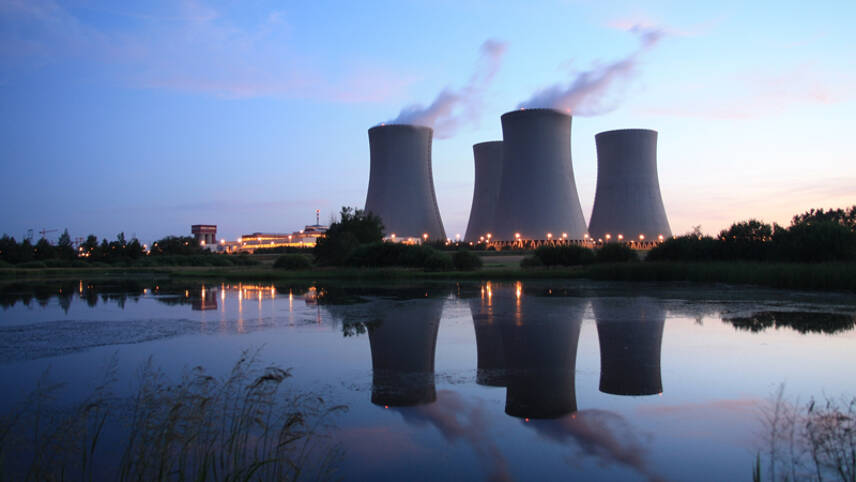Register for free and continue reading
Join our growing army of changemakers and get unlimited access to our premium content

The IEA sees nuclear accounting for 8% of global power generation in 2050
A report published by the IEA late last week emphasizes how, in its net-zero by 2050 scenario, global nuclear power capacity doubles by mid-century against a 2020 baseline. This increase is accounted for by a mix of moves to extend the life of existing power plants, bring new large plants online and commercialise emerging modular reactor technologies (SMRs) which enable the creation of small plants. In 2050, the IEA sees nuclear accounting for 8% of the global power mix and renewables accounting for almost 90%.
The new report looks at global progress towards this point and assesses whether the goalposts now need to be moved in light of the global energy price crisis, which began last year due to global discrepancies in fossil fuel supply and demand and has been greatly exacerbated by Russia’s war in Ukraine.
It points out that, globally, 19 nations currently have new large plants under construction. The IEA expects this number to grow as the global response to the price crisis evolves. It also expects nations like the UK, US, Canada and France to continue their support for SMRs, with the first set to come online before the decade is out.
Nonetheless, IEA executive director Fatih Birol is warning that “a new era for nuclear is by no means guaranteed” and that governments must now implement “robust” policies and supercharge efforts to unlock R&D funding in next-gen nuclear by the private sector.
Without intervention, the IEA estimates that the total capacity of nuclear plants operating in wealthy nations could decrease by one-third between 2020 and 2030. The UK is one of several nations with an impending ‘nuclear gap’, with almost half of existing capacity set to retire by 2025.
The IEA states that safely extending the lifetime of existing nuclear plants, where possible, is an “indispensable” part of the transition to net-zero. Its 2050 scenario is predicated on half of existing plants having their lifetimes extended – but, to date, only 10% of existing plants have had extensions confirmed. The onus for this extension plan will rest with advanced economies. Collectively, wealthy nations host more than 65% of global installed nuclear capacity.
“The capital cost for most extensions is about $500 to $1,100 per kilowatt in 2030, yielding a levelised cost of electricity generally well below $40 per megawatt-hour, making them competitive even with solar and wind in most regions,” states the IEA. It notes that bringing on new large reactors and readying SMRs will be costlier, but argues that this will be necessary to maintain energy security and reach net-zero in the longer term. Half of the emissions reductions accounted for in the Agency’s 2050 net-zero scenario arise from technologies which are not yet commercially viable at scale, including SMRs.
Notably, the IEA makes no recommendations to countries that have already chosen to phase nuclear out entirely by 2050 or sooner due to public or political opposition and are standing by this choice. Arguments against nuclear include the high cost and long lead times of developing large plants; managing waste disposal; preventing weapons proliferation and managing issues arising from conflict. To this latter point, Ukraine’s Zaporizhzhia nuclear power station has been occupied by the Russian military for more than two months now.
Sizewell C: Who pays?
In related news, planning decisions are expected this week on the Sizewell C nuclear plant in Suffolk. The project has faced a string of delays and Ministers are understood to be keen to end them. Friday (8 July) could be the day that the 3.2GW plant is finally granted planning permission.
Earlier this year, the Government passed a new Nuclear Energy (Financing) Bill, which will change the funding model for new nuclear projects from the current Contracts for Difference (CfD) approach to a Regulated Asset Bade (RAB) funding model. Energy Secretary Kwasi Kwarteng is a staunch supporter of this change, which will reduce the risk to investors by providing them with regular returns before the plants they support begin generating power.
The Government itself has invested £100m in Sizewell C and is planning to take a 20% stake. Developer EDF also has a 20% stake. The other 60% is still up for grabs, with Centrica understood to be considering taking a stake.
However, concerns remain about whether the change will, ultimately, increase the costs to the general public – and whether the Government is making adequate interventions to shield low-income households from these costs. The Government, the Guardian reports, has rejected a proposal for electricity suppliers to be prevented from taking money from consumers receiving universal credit to fund their RAB payment obligations.
BEIS claims that the average UK home will pay £1 per month to aid Sizewell C construction costs. This is believed to be a conservative estimate.
Through the Energy Security Strategy, the Conservative Party committed to triple installed nuclear capacity by 2050 and to bring the equivalent of one new plant online each year in the 2020s. Several energy sector experts have noted that, given the long lead-times associated with large plants, and the fact that SMRs are only likely to begin generation in 2025 in the most optimistic case-scenario, this latter pledge may be impossible to meet.


Please login or Register to leave a comment.